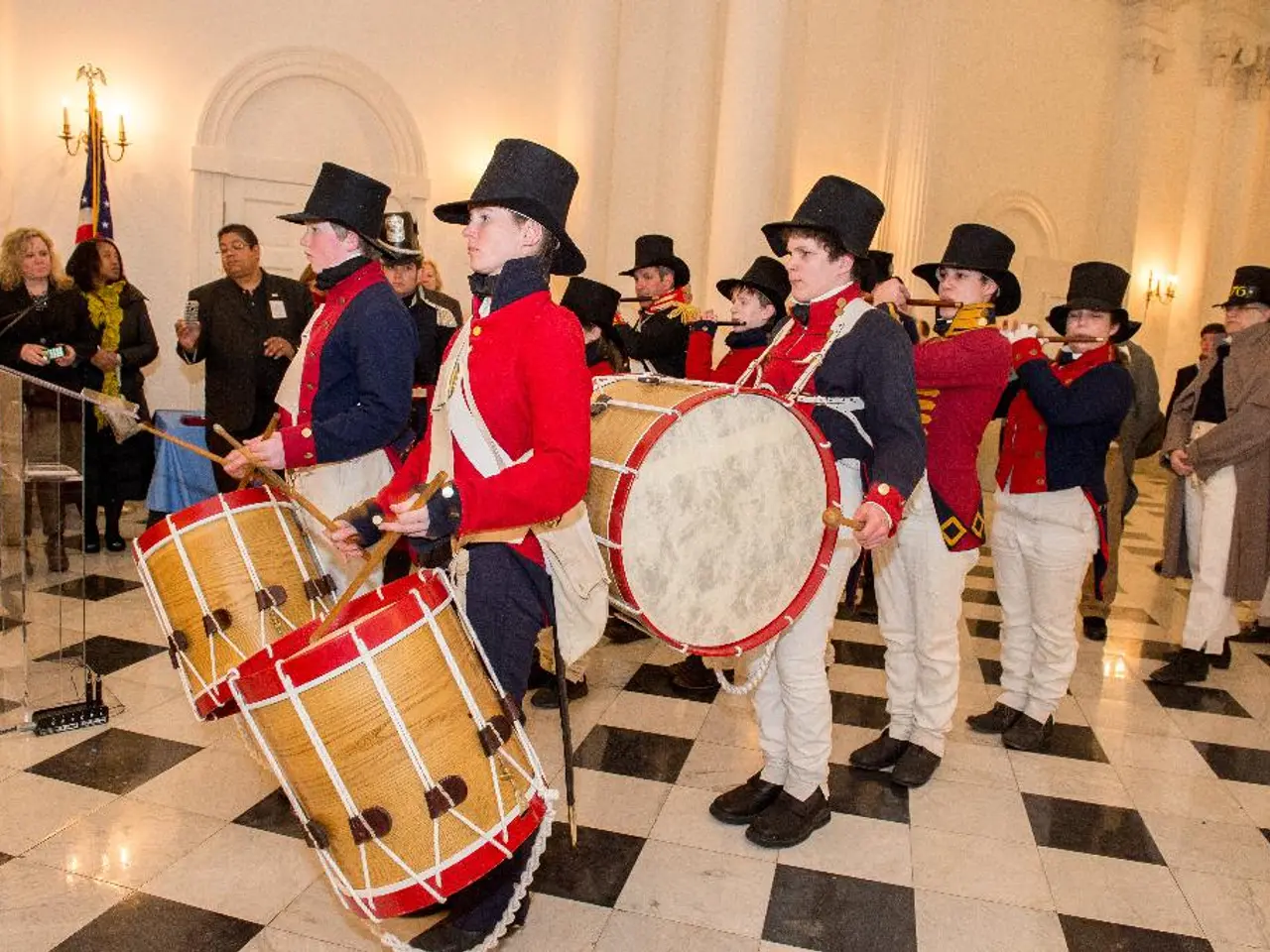10 Instances where individuals attempted to militarize melodies
From the battlefields of ancient China to the modern conflicts of the 21st century, the use of sound as a weapon has been a recurring theme in human history. This article explores how music and sound have been employed in various forms and contexts, serving as tools for military communication, psychological warfare, and social control.
In medieval Europe, drums played a crucial role in military communication and troop mobilization. Snare and bass drums were used to convey orders and rally troops, serving as an auditory signaling system [2]. This use of drums was effective in coordinating military movements and boosting morale.
Ancient times saw the use of sound to intimidate or disorient enemies. For example, the use of loud noises or clashing cymbals could create a psychological impact on opposing forces [1]. This practice can be traced back to ancient China, where massive war drums were carried onto the battlefield to rally troops and terrify the enemy.
The Mongols utilized drums to create an overwhelming sense of dread before launching their assaults [1]. Similarly, the Vikings used long, booming battle horns called "lur" to create an ominous signal of impending attack, terrifying and disorienting coastal communities [1].
In more recent history, the Scottish regiments during World War I revived the tradition of pipers leading troops into battle, despite the obvious dangers [1]. Bagpipes were historically used as instruments of war to inspire troops and intimidate enemies, with Scottish clans employing pipers on the battlefield.
The use of sound as a psychological weapon can also be seen in modern conflicts. During the Vietnam War, the U.S. military used music to demoralize enemy forces, while in the aftermath of 9/11, the CIA began using loud, repetitive music as a psychological tactic in enhanced interrogation programs [3].
In more contemporary times, sound has been used as a non-lethal weapon. High-intensity sound devices, such as LRADs (Long Range Acoustic Devices), are used for crowd control and deterrence. These devices emit powerful sound waves that can cause discomfort or incapacitate individuals without causing permanent harm [4].
The Ghost Army, a top-secret U.S. unit in World War II, used loudspeakers to project convincing audio simulations of troop movements, tank engines, and artillery fire, misleading German forces into believing that Allied troops were massing in specific locations [5]. Similarly, during Operation Just Cause in 1989, the U.S. military blasted heavy metal and hard rock music at deafening volumes outside the Vatican embassy in Panama City to force Panamanian dictator Manuel Noriega out [6].
Zulu warriors of South Africa employed elaborate drumming patterns to communicate across vast distances and build a sense of unity within their ranks [7]. Archaeological evidence suggests that Aztec death whistles were used during sacrificial ceremonies to mimic the screams of the dead [8].
In conclusion, music and sound have been employed throughout history as tools for military communication, psychological warfare, and social control, reflecting the complex and multifaceted role they play in human society. From the rhythmic pounding of drums to the haunting melodies of bagpipes, the use of sound as a weapon continues to evolve, shaping the course of history in unexpected ways.
References: [1] https://www.history.com/news/how-bagpipes-were-used-as-weapons-of-war [2] https://www.britannica.com/topic/drum [3] https://www.nytimes.com/2005/11/29/politics/waterboarding-and-the-law-of-war.html [4] https://www.bbc.com/future/article/20180418-the-history-of-sound-as-a-weapon [5] https://www.history.com/news/ghost-army-wwii-deception [6] https://www.history.com/news/how-the-u-s-used-psychological-warfare-to-oust-noriega [7] https://www.britannica.com/topic/Zulu-people/Social-life-and-culture [8] https://www.ancient-origins.net/history-famous-people/aztec-death-whistles-008392
- The use of drums in medieval Europe was instrumental in military communication and troop mobilization, with snare and bass drums conveying orders and boosting morale [2].
- Similarly to the Mongols and Vikings, ancient Chinese warriors employed massive war drums to rally troops and create a sense of terror in the enemy [1].
- In contemporary times, high-intensity sound devices such as LRADs are used for crowd control and deterrence, emitting powerful sound waves that cause discomfort or incapacitate individuals without causing permanent harm [4].







